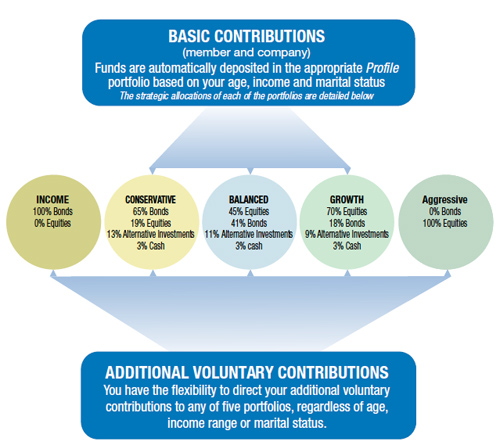Contributions
- You and your employer must contribute an amount that, when combined, equals 10% of your earnings (up to a maximum earnings of CI$87,000 a year). Your employer’s share must equal at least 5% of your earnings. These contributions – referred to as basic contributions – are deposited in a member account set up in your name.
- In addition to basic contributions, you can make additional voluntary contributions (AVCs). AVCs are deposited in your member account.
- If you have made a withdrawal from your account to use as a deposit for a home or land or for the purpose of paying off an existing mortgage, you must contribute an additional 1% of your earnings from the month immediately following the date of the withdrawal. These additional contributions will continue for either 10 years from the date of the withdrawal, until the full amount is paid back, or until you reach normal retirement age – whichever comes first.
When you can retire
- The normal retirement date is the first of the month on or after your 65th birthday. However, you can retire earlier. You can retire on the first of any month on or after your 55th birthday. It is also possible to retire after your normal retirement date.
Your benefit
- When you retire, you will have three options for receiving your retirement benefits: an annuity, a Retirement Savings Arrangement or a retirement income fund.
- If you elect the Retirement Savings Arrangement, you will receive installments for a number of years during your retirement as per the schedule provided by the National Pensions Office.
- If you elect the annuity option, all of your Silver Thatch investments will be cashed in and the money used to buy an annuity.
If you leave your employer
- If you stop working for your current employer and your new employer does not participate in Silver Thatch, you will have two options:
- You can leave your investments in the Plan where they will continue to accumulate investment earnings. At retirement, the money will be used to provide an income.
- You can transfer the cash value to the pension plan of your new employer (provided that plan complies with the National Pensions Law).
If you leave the Cayman Islands
- If you stop working in the Cayman Islands and leave the islands, you can, subject to certain restrictions:
- receive the cash value of your investment, or
- transfer the cash value to another pension plan.
- purchase an approved annuity.
Investment of your accounts
- Your basic contributions (member and employer) are directed automatically to one or two of three Profile investment portfolios – Growth, Balanced or Conservative – based on your age, income range and marital status. In certain cases where the member can show significant knowledge or experience in investment management then they may apply to the trustees for an exemption from automatic portfolio allocation.
- You decide how to invest your AVCs. These include the three portfolios available for basic contributions, plus an ultra-conservative income portfolio and an Aggressive growth portfolio.
- If you have made a withdrawal from your account to use as a deposit for the purchase of a home or land or for the purpose of paying off an existing mortgage, then your 1% additional contributions will be directed in the same manner as your basic contributions.

Pension for Property
- You may withdraw up to CI$35,000 from your account to use as a deposit for a House or Land or to Pay off an Existing Mortgage, subject to certain conditions, including;
- You must be Caymanian, as per the meaning under the Immigration Law (2010 Revision).
- If you are using the funds as a deposit to purchase or build a home you must not already own a dwelling unit in the Cayman Islands.
- If purchasing land you must not own any other land in the Cayman Islands.
- If you are using the funds to pay off an existing mortgage on a home the amount must be enough to completely pay off all loans secured against that property so that your home is “free from any encumbrance”.
Death before retirement
- If you have a spouse and die before you start receiving retirement benefits, your Silver Thatch investments will be re-registered in the name of your spouse.
- If you do not have a spouse, your investments can be cashed in by your personal or estate representative.
Death after retirement
- The death benefits payable will depend on the pension option you select at retirement.
Questions about the Plan?
Please refer to the FAQs section for answers or download either the Member Handbook or the Employer Handbook for greater detail on the Plan.

